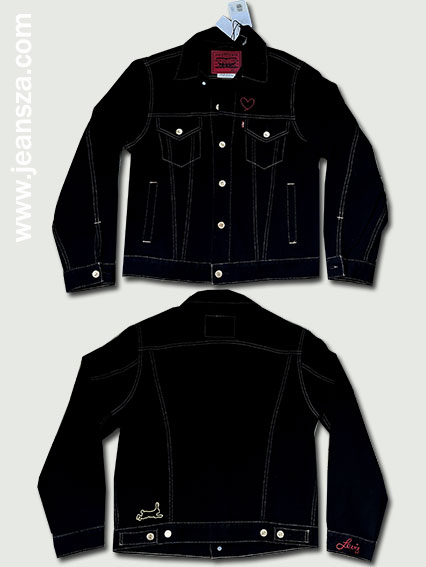Understanding Levi's Care Tags: A Guide to Authentic Jeans
Levi's jeans often feature small, rectangular care tags that hold a wealth of information about their origin and production. While many people might overlook these tiny labels, they're actually incredibly useful for dating your jeans and even verifying their authenticity. Let's dive into what these tags tell us.
What's on a Levi's Care Tag?
These care tags are typically small, white, rectangular pieces of fabric with black letters and numbers. They're usually stitched into the inside left seam of your Levi's, near the front pocket. One side of the label provides care instructions and warnings, including details about the 10% shrinkage of Levi's famous "Sanforized To Fit" (STF) denim.
For collectors and enthusiasts, the care tag is also crucial for determining if your Levi's are genuine. Authentic Levi's selvedge (red line) jeans often have specific label characteristics that are difficult for fakes to replicate, especially those made in the USA.
Dating Your Vintage Levi's: "Small e" Era (1971-1990)
The care tags are particularly helpful for dating vintage Levi's. For example, if you have a pair of "small e" Levi's (referring to the lowercase 'e' on the red tab), they were produced between 1971 and 1983. Jeans from the 1983-1990 range also fall into this category. All of these were Made in USA.
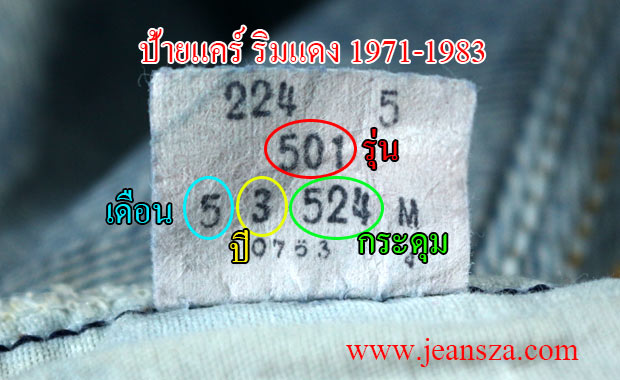
Dating Your Vintage Levi's: "Small e" Era (1971-1990)
The care tags are particularly helpful for dating vintage Levi's. For example, if you have a pair of "small e" Levi's (referring to the lowercase 'e' on the red tab), they were produced between 1971 and 1983. Jeans from the 1983-1990 range also fall into this category. All of these were Made in USA.
Let's look at an example of a care tag from a pair of Made in America "Selvedge red line" Levi's 501s from 1971-1983:
Decoding the Example Tag:
Red Circle: Indicates Model 501.
Blue Circle: Shows the month of production. In this example, "5" represents November.
Yellow Circle: Represents the year of production. Here, it's "3". This is where it gets interesting! Some might argue it's 1973 or 1993. However, for "Jeans Levi's selvedge," a single-stitch back pocket indicates 1973, while a chain-stitch back pocket indicates 1983. If it's a non-selvedge pair, then "3" would typically refer to 1993.
Green Circle: This is the factory code for the manufacturing location in the United States. This code should match the number stamped on the back of the top button of your jeans.
Understanding Specific Dates and Features:
Here are some examples of Levi's Selvedge jeans and their corresponding care tag details:
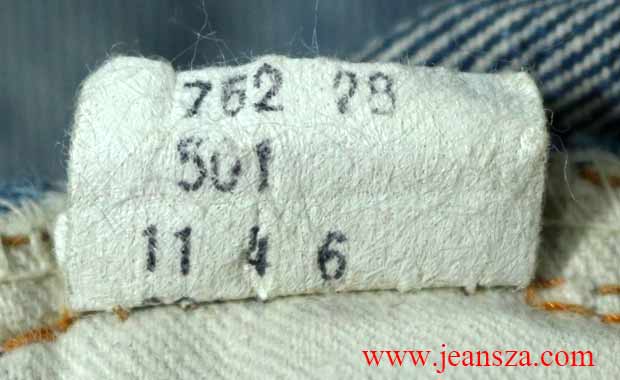


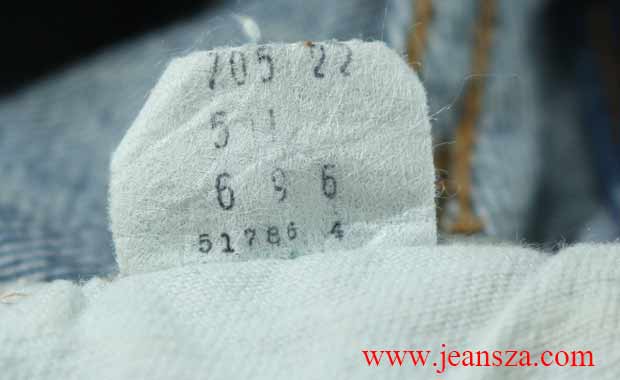

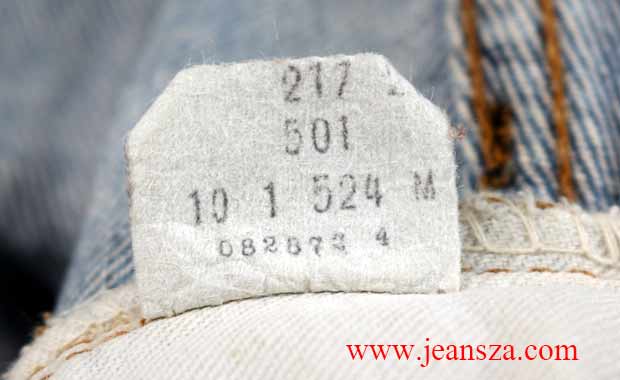
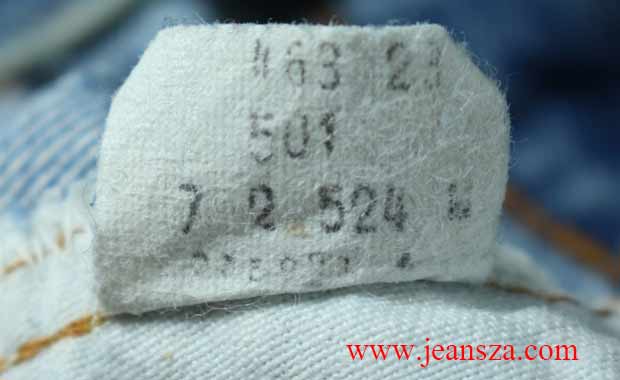
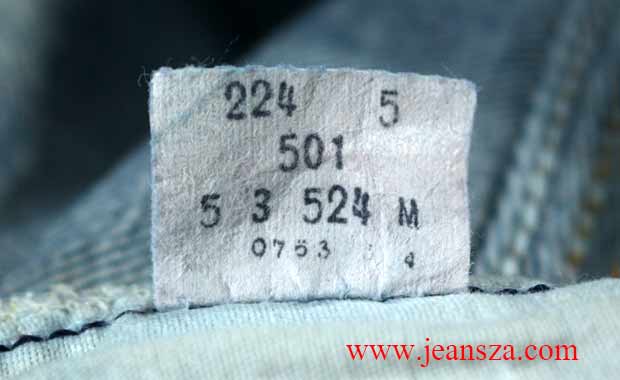
1974, November (month 11), Button stamp #6: Levi's Selvedge with a "small e" red tab and single stitching on the back pocket.
1977, May (month 5), Button stamp #6: Levi's Selvedge with a "small e" red tab and chain stitching on the back pocket. (Note: sometimes the button number might appear out of sequence on the tag, but the button itself is the definitive match.)
1978, October (month 10), Button stamp #6
1979, June (month 6), Button stamp #6
1980, January (month 1), Button stamp #6
1981, October (month 10), Button stamp #524
1982, July (month 7), Button stamp #524
1983, May (month 5), Button stamp #524
Selvedge denim production began to decline in 1983 as Levi's started using wider denim fabric. Production of selvedge jeans largely stopped between 1983 and 1985.
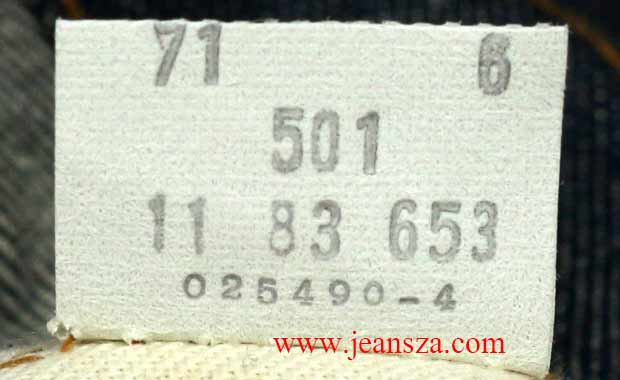
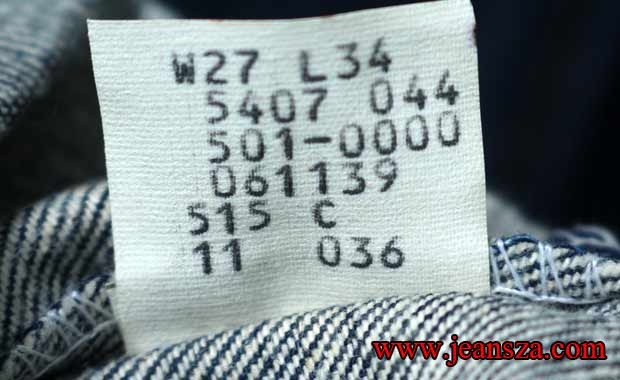
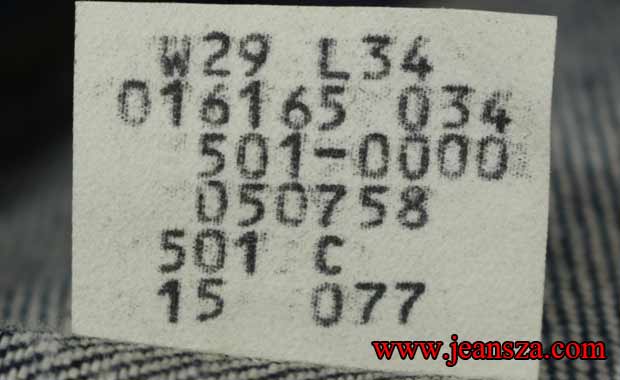
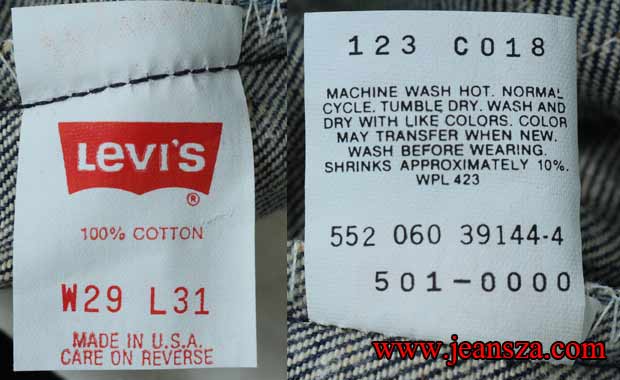
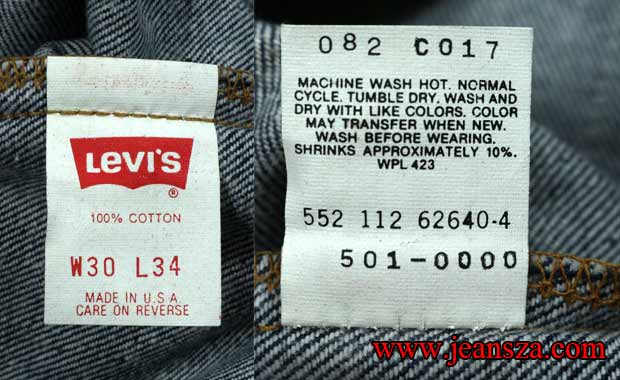
Non-Selvedge Era: From 1983 Onwards
From 1983 onwards, Levi's began producing non-selvedge jeans. You'll notice that the care labels for non-selvedge jeans look different from their selvedge counterparts. They often include an additional two-digit code (e.g., "11") before the month and year of production.
Here are some examples of non-selvedge Levi's with their care tag details:
1983, August (month 8), Button stamp #653
1986, March (month 3), Button stamp #515
1987, July (month 7), Button stamp #501
1990, June (month 6), Button stamp #552
1992, November (month 11), Button stamp #552
Evolving Labels
Levi's care labels have continued to evolve in format and placement over the years. Modern Levi's tags are often longer, include multiple languages, and are typically stitched into the inner seam of the pants. For serious collectors and enthusiasts, it's worth taking the time to study the specific characteristics of Levi's labels from different eras to help identify and authenticate your jeans.



